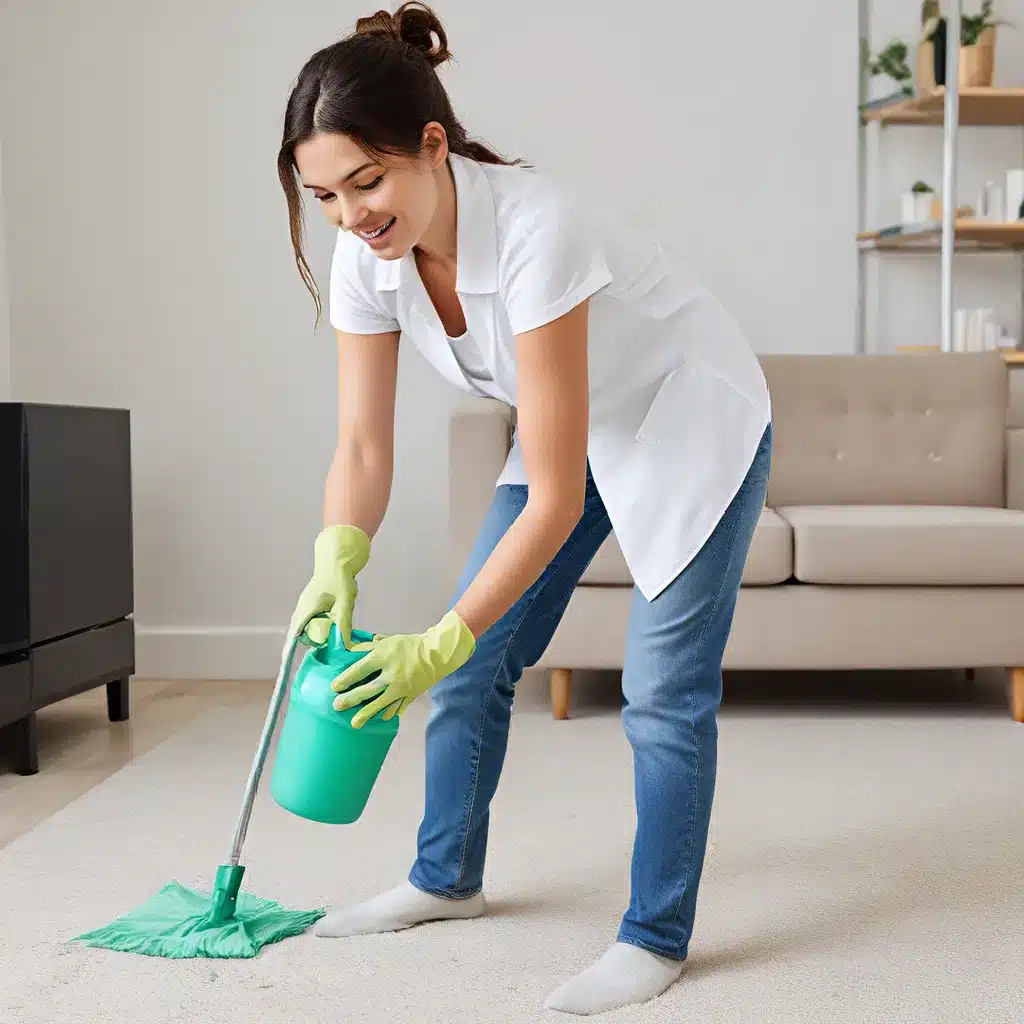As someone who’s been navigating the ups and downs of home cleaning for years, I’ve learned a thing or two about the importance of disinfection and sanitization. Let me tell you, it’s not just about making your home sparkle – it’s about keeping you and your loved ones healthy and safe.
The Benefits of a Clean, Disinfected Home
When it comes to maintaining a clean and healthy living environment, the benefits are far-reaching. Removing germs and bacteria from your home can keep you and your family from getting sick, or if someone was recently ill, it can help prevent others in your household from catching it.
But the advantages don’t stop there. Reducing dust and improving air quality can make a significant difference for people with conditions like asthma, allergies, and COPD. And let’s not forget the mood-boosting and decluttering benefits of a tidy, organized space. A clean home can truly help you declutter your mind and promote healthier, more restful sleep.
While a thorough cleaning session may not burn as many calories as we’d like, it can still get your heart rate up and give you a mini-workout. Just incorporate some squats, lunges, and yoga poses into your cleaning routine, and you’ve got a win-win situation.
When and How to Disinfect
Now, let’s dive into the nitty-gritty of disinfecting and sanitizing. The CDC and EPA have laid out some clear guidelines on when and how to do it effectively.
For everyday cleaning, regular household cleaners containing soap or detergent are usually sufficient to remove most germs and dirt. But if someone in your home is sick or has recently been ill, it’s important to disinfect as well.
To disinfect, you can use an EPA-registered disinfecting product or make your own bleach solution. Just remember to clean the surface first before disinfecting, as impurities like dirt can make it harder for the chemicals to work.
Daily sanitizing may not be necessary if you’re already cleaning surfaces and objects carefully after use. But it’s a good idea to sanitize certain areas like kitchen counters, food preparation surfaces, and toys used by young children.
Preventing the Spread of Germs
One of the best ways to keep your home germ-free is to stop germs from coming in the door in the first place. That means washing your hands often, especially before touching your face or food. Gloves can also provide added protection, especially if you have any cuts on your hands or are using harsher cleaning chemicals.
Your phone is another surprisingly dirty culprit, picking up all sorts of germs as it goes everywhere with you. Disinfect it regularly with a lint-free cloth and a mixture of water and isopropyl alcohol.
And don’t forget about your shoes! Removing them at the door can help keep those outdoor germs outside where they belong. This is especially important if you have someone with allergies or a baby crawling around.
Cleaning Tools and Techniques
The cleaning tools and products you use can make a big difference in how effective your disinfection efforts are. Sponges, rags, and mops can quickly become breeding grounds for germs, so be sure to wash them regularly with hot water to disinfect.
When it comes to cleaning products, steer clear of mixing chemicals unless you’ve done your research. The CDC and EPA have a handy database of antimicrobial products that are effective and better for your health and the environment.
And don’t forget about the laundry! Prioritize washing things like throw blankets, bed sheets, towels, and rugs using the hot water cycle for maximum germ-killing power.
Maintaining a Cleaning Routine
Figuring out the right cleaning schedule for your household can be a bit of a challenge. Some people prefer to tackle everything in one day, while others find it easier to spread out the chores over the week.
Regardless of your approach, daily tasks like washing dishes and wiping down surfaces are a must. Waking up to a clean kitchen and tidy living space can truly set the tone for a productive and stress-free day.
And remember, when someone in your home is sick, you’ll need to clean and disinfect more frequently until they’re back on their feet. It’s all about finding that balance between a comfortable, not-too-sterile environment and one that keeps your family healthy.
Exploring Further
As with any topic related to health and wellness, there’s always more to learn. Ongoing research continues to shed light on the evolving science behind effective disinfection and sanitization practices.
Some experts believe that regularly encountering certain microbes can actually strengthen our immune systems and prevent the development of conditions like asthma and allergies. There’s certainly debate around the optimal level of cleanliness, and it’s an area that warrants further exploration.
So, as you embark on your journey to disinfect and sanitize your home effectively, keep an open mind, stay curious, and don’t hesitate to seek out additional resources and professional advice. After all, a clean and healthy living environment is the foundation for a fulfilling life.
And if you ever need a little extra help, don’t forget to check out the cleaning services offered by Adam Cleaning. They’re the experts at keeping homes sparkling and germ-free, so you can focus on the things that matter most.







